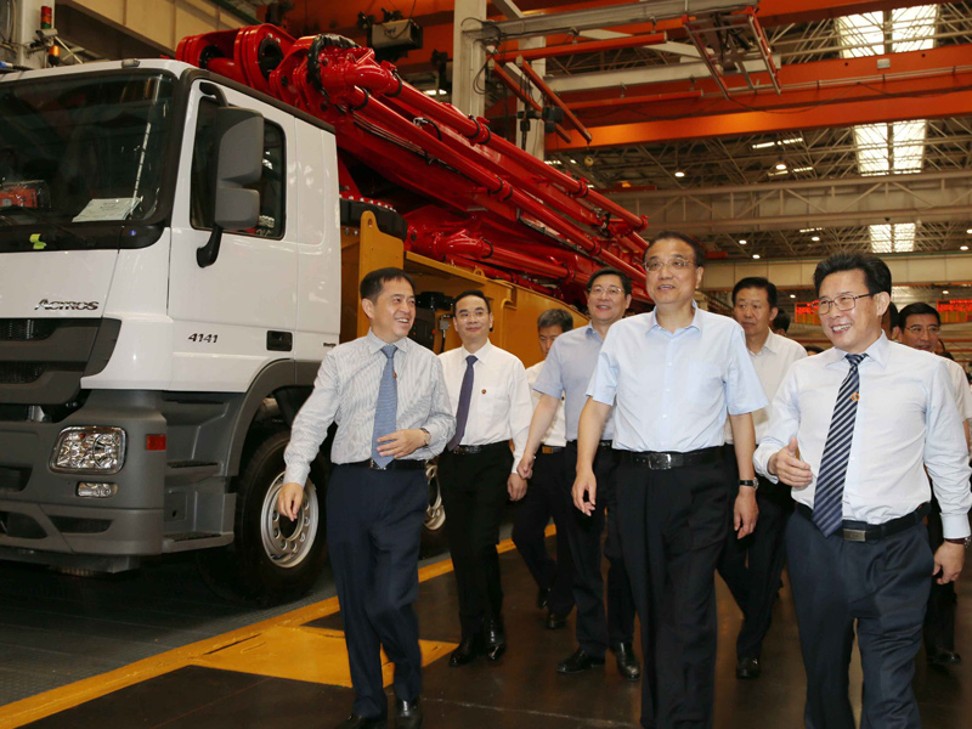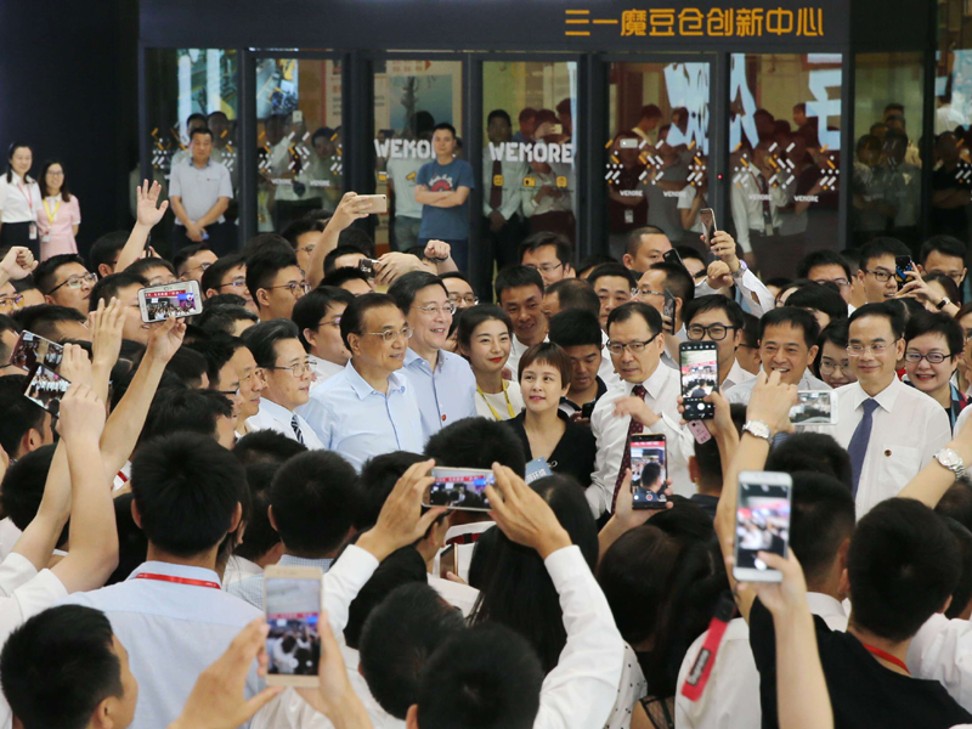
China’s Premier Li Keqiang digs Sany’s ‘excavator index’ as measure of economic health
Activity of 380,000 concrete mixers, excavators and cranes provides ‘important support for macroeconomic analysis’, leader says after site visit
Data produced by China’s biggest heavy equipment manufacturer on the whereabouts of its construction machines is helping Beijing to better evaluate the state of the nation’s economy, according to Premier Li Keqiang.
After visiting Sany Heavy Industry on Tuesday, Li was quoted as saying that its “excavator index … provided important support for macroeconomic analysis”.
During his visit to Sany’s headquarters Changsha, central China’s Hunan province, Li “inquired in detail about the construction situation of different regions”, the statement said.
Sany, which has manufacturing facilities around the world and competes on the global stage with Caterpillar of the US and Komatsu of Japan, has been providing Beijing with information captured by the index on a monthly basis since 2014.
Li even made reference to the index at an economic analysis conference he hosted in July.
As head of the Chinese government, with responsibility for the world’s second-largest economy, Li is known for his mistrust of economic data produced by state agencies. In 2007, when working as party chief of the industrial province of Liaoning, he described China’s GDP figures as “man-made” and not trustworthy.
According to US diplomatic cables released by WikiLeaks in 2010, Li said that when he was boss of Liaoning he instead looked at railway freight volume, bank loans and electricity consumption to measure the economy. In response to that revelation, The Economist compiled a “Li Keqiang index” – based on those three indicators – which is used by some investors to keep tabs on Chinese economy.
Zhou Hao, a senior emerging markets economist at Commerzbank in Singapore, said Li’s words of support for the Sany index could indicate that the premier, who is now in his second term, was becoming more sceptical about the unwavering nature of the official economic indicators calculated and published by the National Bureau of Statistics.
China’s quarterly GDP growth rate, for instance, has hovered within the narrow range of 6.7 to 7 per cent for the past 13 quarters, rendering it almost worthless as a guide to the nation’s growth cycle.
“Some macro data [from the government] looks too stable,” Zhou said, adding that Li’s search for alternative indicators was evidence of his ability to “sense the real situation of a sector, or even the national economy”.
Concerns about the state of China’s economy have resurfaced due to slowing fixed-asset investment – one of its traditional growth engines – and increased vulnerability in the export sector because of the threat of US tariffs.
China’s fixed-asset investment slowed to 7 per cent in the first four months of 2018, from 8.9 per cent a year earlier, according to the national statistics bureau. Meanwhile, growth in infrastructure spending, another key driver, slowed to 12.4 per cent in the period, down from 19 per cent a year earlier.
The agency is expected on Thursday to release April’s economic indicators for industrial output, investment and consumption.



